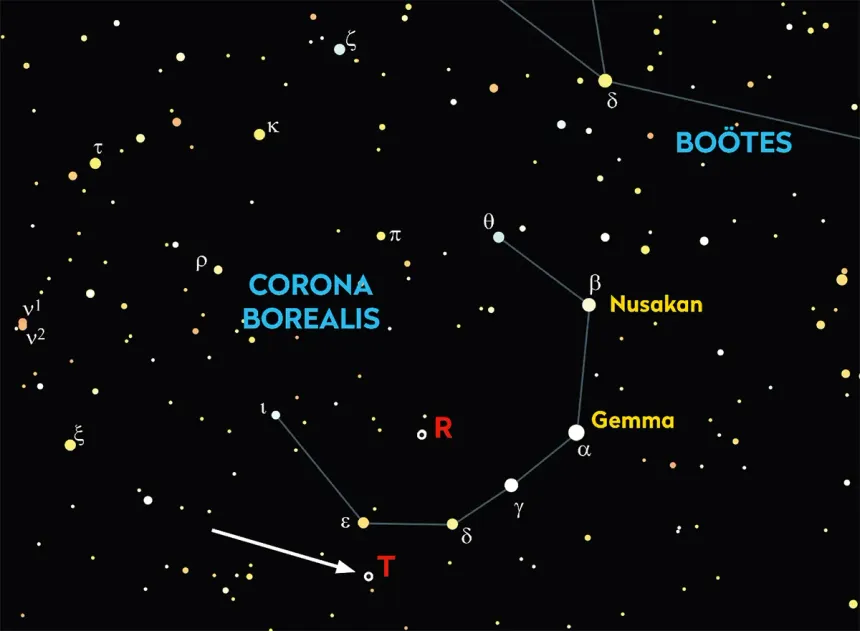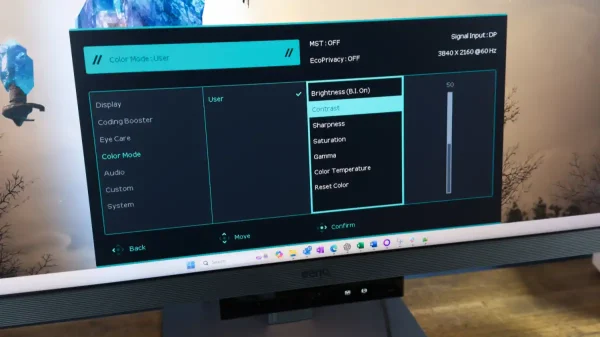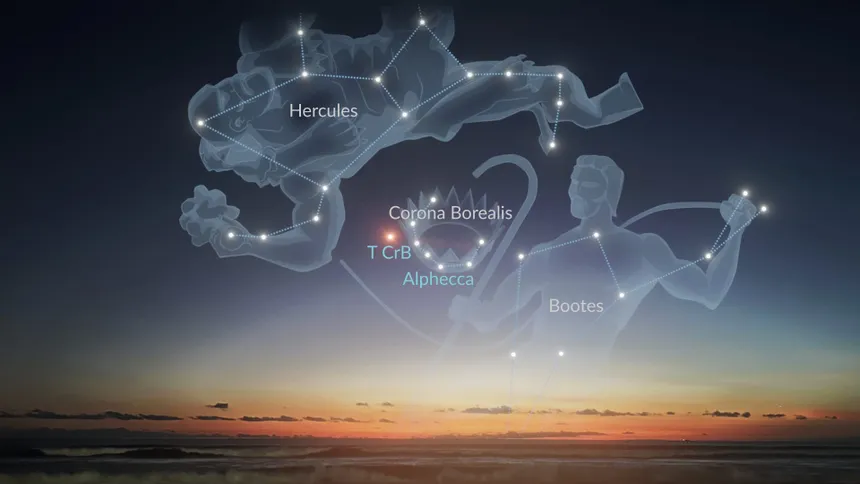In the coming months, a rare and spectacular event will take place in the night sky. The binary star system T Corona Borealis (T CrB) is expected to experience a nova eruption, a phenomenon in which a star suddenly increases in brightness due to the explosion of a white dwarf star. This event will be visible to the naked eye and will be a new addition to the stars visible in the constellation Corona Borealis.
A nova eruption occurs when a white dwarf star in a binary system accumulates material from its companion star, a red giant. The white dwarf’s high density and strong gravity allow it to strip away material from its companion, building up a layer of hydrogen on its surface. Once this layer reaches a critical temperature, it ignites, causing a massive nuclear explosion that ejects the gas from the white dwarf’s surface in a hot, luminous shell. This explosion is what gives the nova its characteristic bright appearance.
T CrB is an unusual binary system because it is a recurrent nova, meaning that it erupts repeatedly at regular intervals. In this case, the eruptions occur every 80 years, making it a rare and exciting event for astronomers and amateur stargazers alike.
Astronomers have been monitoring the system and have detected a decrease in brightness, indicating that the eruption is imminent. The exact timing of the event is difficult to predict, but it is expected to occur within the next few months. When it does, the nova will be visible to the naked eye for a few nights, appearing as a bright dot in the constellation Corona Borealis.

T Corona Borealis Nova Eruption
For those who want to catch a glimpse of this rare event, astronomers recommend familiarizing themselves with the patch of sky around the constellation Corona Borealis using a star chart or phone app. Once you know what stars are visible in that area of the sky, you’ll be able to appreciate the difference when the nova appears. Although it will only be visible to the naked eye for a few nights, it will remain visible for several weeks with a pair of binoculars.
The T CrB nova eruption will be a once-in-a-lifetime event for many stargazers, and it’s a great opportunity to learn about the science behind this phenomenon. By understanding the process of accretion and the nuclear explosion that causes the nova, we can gain a deeper appreciation for the complex and dynamic nature of the universe.
The T CrB nova eruption is an exciting event that will add a new star to the night sky, and it’s an opportunity for astronomers and amateur stargazers alike to learn more about the wonders of the cosmos.








































